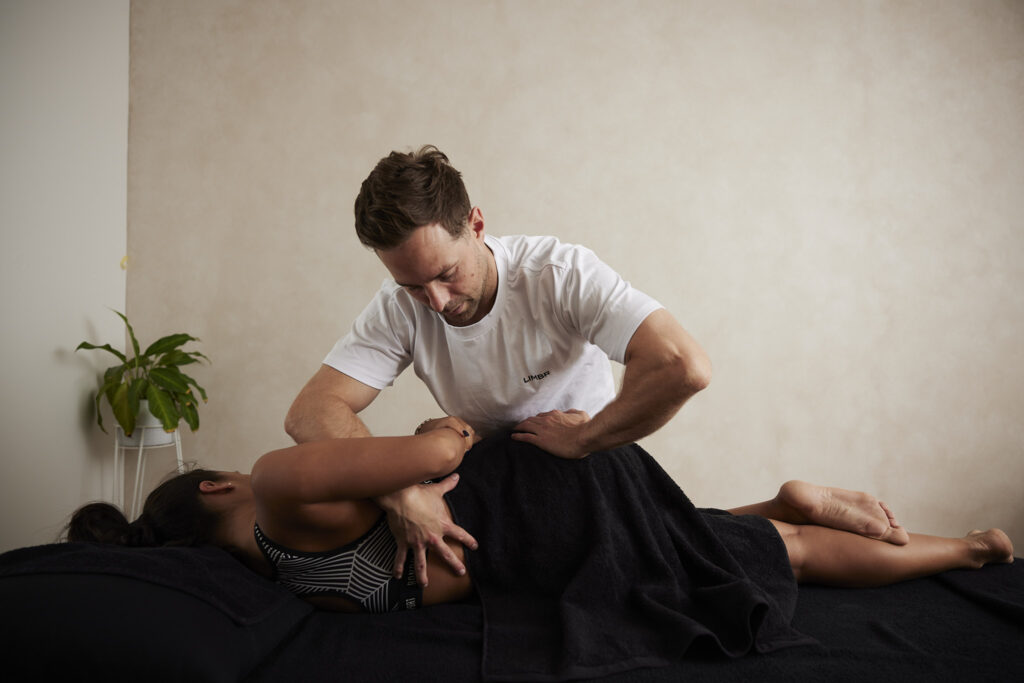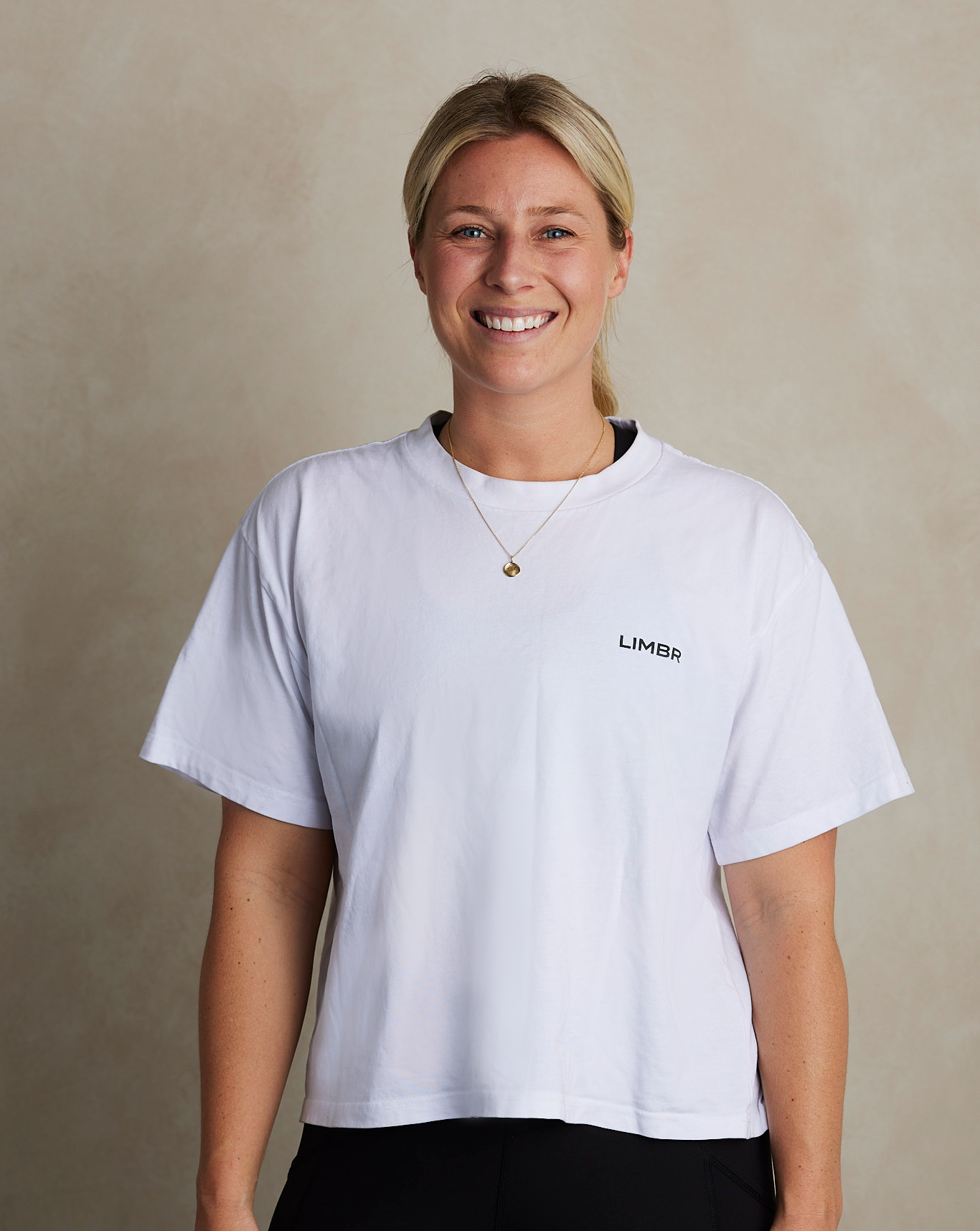Everything you need to know about ‘cracking’
Ashleigh Kaye Ryan 05/12/22Firstly, we will take care of some myths for you, no – it does NOT give you arthritis and no – it is NOT bone colliding with bone!
So, what is it?
Osteopaths have a wide variety of techniques they use to optimise the overall structure and function of the human body. One technique some osteopaths choose to use is called High Velocity Low Amplitude (HVLA) thrusts, which is a learnt across 3rd, 4th, and 5th year university. You might commonly know this as cracking, pops, or clicking!
It is a very gentle and safe technique where a practitioner applies a very fast, specific and direct thrust through a joint to improve its range of motion when it becomes restricted, ie when you wake up in the morning and can’t turn your neck one way.
If you think about a joint such as the knee, we have the femur (thigh bone), that connects to the tibia (shin bone) and is stabilised by ligaments. At the joint level, to maximise joint congruency and reduce friction we have a viscous like fluid known as synovia, or as I like to call it, the WD40 of the body.
The synovia is composed of different types of gases, and when a joint is pushed or pulled beyond its comfortable range of motion, it can cause the ‘cracking’ or ‘popping’ sound, just like bubble wrapping!
Why is it done?
Sometimes, our joints become misaligned, compressed or restricted in their range.
How? Picture this:
- Think of the human skeleton (just the bones)
- Now picture the muscles attached to the skeleton connecting one bone to the other, ie “the thigh bone (femur) is connected to the knee bone, the knee bone (patella) is connected to the shin bone, the shin bone (tibia) is connected… etc”.
- Now, picture what happens when a muscle becomes hypertonic (tight) and the length of the muscle shortens.
- The tight muscle can then pull the joint out of alignment.
When this happens, it creates a restricted range of motion in the joint. Applying a high velocity, low amplitude thrust through this restricted barrier, along with muscle release work is a very effective way to re-align the joint and restore it’s natural range of movement.
Different types of ‘clunking, ‘clicking’, or ‘popping’ sounds – what are they?
A ‘Clunk’ sound: A Clunk sound around your joint may come from a muscle being too tight. (Just a reminder for you, tendons attach muscles to bone, and ligaments attach bones to bones). If muscles are tight and therefore in a shortened position, it creates pull on the tendon which may then have to flick over a bony prominence in a joint to get movement. This often produces a lower pitch ‘clunk’ sound.
Examples of areas of the body where you may hear this:
- The glenohumeral joint (shoulder). Do you ever get a clunk when you do arm circles or rotate your shoulders? This is likely to be caused by muscle tightness or poor posture (hunched shoulders).
- The femoroacetabular joint (hip). Do you ever lay on your back to do leg raises or sit ups and notice a big clunk in the front of your hip? This is likely to be caused by the iliopsoas muscle (hip flexor) being too tight and flicking of the joint as you move.
A ‘Click/Pop’ sound: The higher pitch clicking sound is most commonly what I have talked about above. This happens when a synovial joint is pushed or stretched beyond its comfortable range and the gases within the synovial fluid create a clicking sound.
Examples of areas of the body where you may hear this:
- The phalanges (fingers). When you pull or push your fingers
- Thoracic spine (upper back). If you lean back over a chair, or on a foam roller you may hear some clicks.
- Lumbar spine (Lower back). If you lay on your back and rock your knees from side to side, or sit and a chair and rotate your back from side to side you make hear this click.
- Cervical spine (neck). If you drop your ear towards your shoulder on either side you may also hear this ‘clicking’ sound!
A ‘Popping/grinding’ sound: A grinding or lots of little small pop sounds may occur as a result of degenerative change within a joint.
Examples of areas of the body where you may hear this:
- Tibiofemoral or patellofemoral joint (Knee). As you squat, kneel down or stand from sitting.
- Glenohumeral joint (shoulder). As you rotate or circle your arm.
Do you have a choice?
Absolutely! You have complete control over anything that happens to your body in any situation. In a consultation, with a manual therapist, the therapist is legally not allowed to commence any technique, including ‘cracking’ without your consent. The practitioner (a qualified osteopath or chiropractor) should also again confirm verbally if and when they are going to do a HVLA technique and get consent again.
Please be aware that a ‘crack’ is not always needed to improve your overall structure and function. Feel free to be open with any practitioner you see and tell them if you aren’t comfortable with it because it’s completely up to you!
If you want to watch a quick video to help you understand it more, click on this link. https://ed.ted.com/lessons/why-do-your-knuckles-pop-eleanor-nelsen

